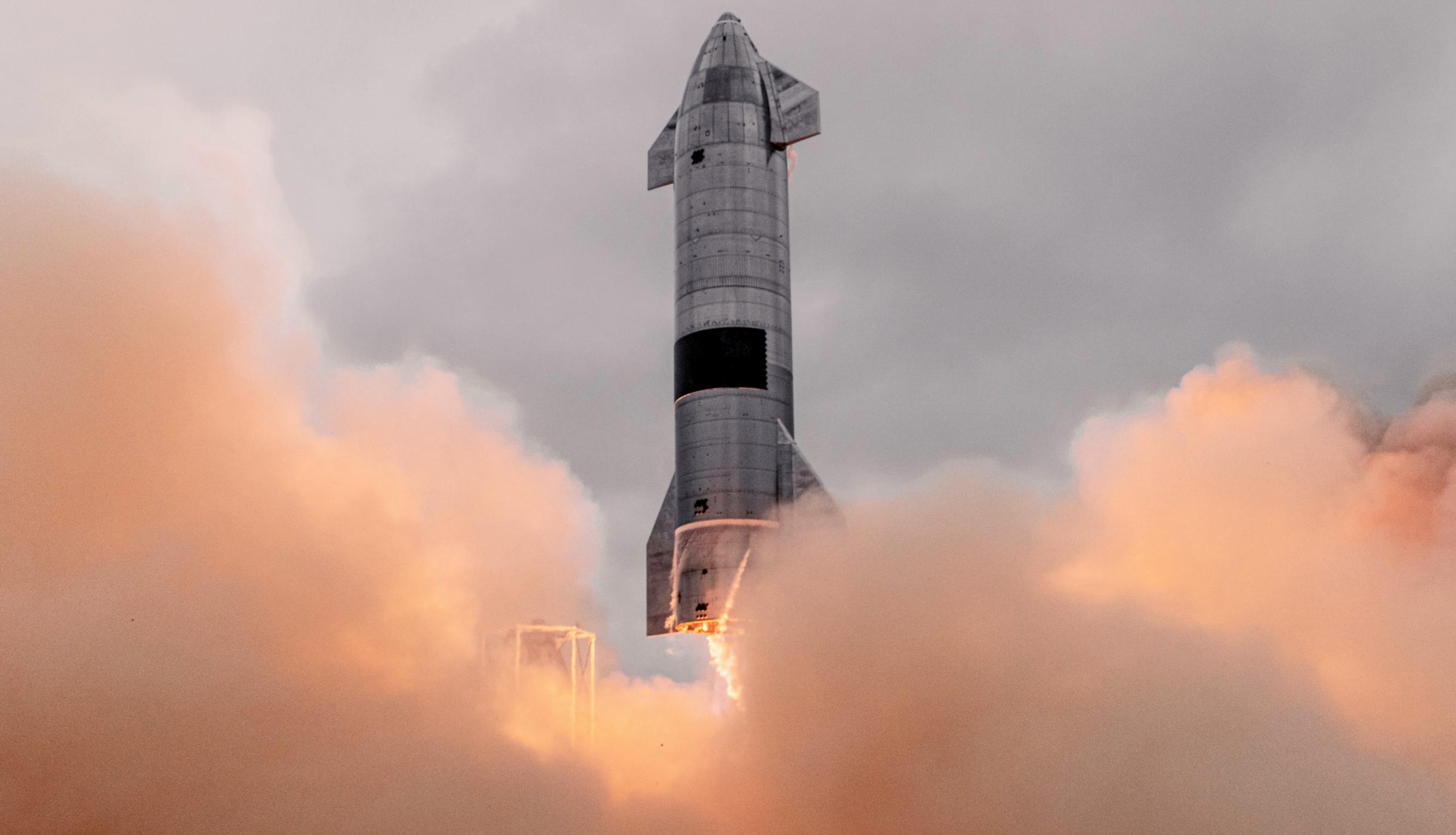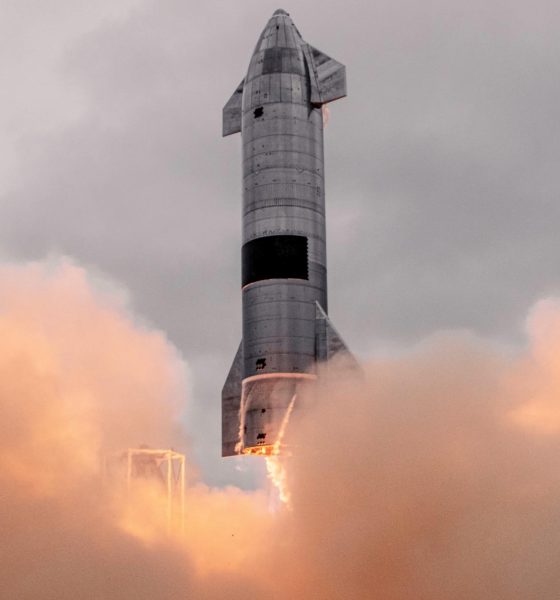

News
SpaceX teases more Starship flight tests “in the days ahead”
A SpaceX engineer hosting the company’s recent record-breaking Starlink launch told viewers to “stay tuned for additional [Starship] test flights in the days ahead.”
Spoken during a segue focused on Starship’s first fully successful landing days prior, the senior SpaceX employee’s choice of words could scarcely have been more intriguing and wide-open to interpretation. Ever since Starship SN15 stuck the landing on May 5th, the ~50-meter (~165 ft) tall steel rocket has taken a small but noteworthy departure from partial prototypes SN5 and SN6 – both of which survived short hop tests last year.
Unlike Starship SN5 and SN6, which both took two full days to safe, SpaceX recovery teams were able to approach full-size prototype SN15 less than four hours after touchdown and an adjacent highway was opened to the public just half a day after that. More importantly, as of May 11th, Starship SN15 has effectively been ready for transport for five days.
Unlike any prior Starship test, Starship SN15 was the first vehicle to test out a new custom-built transporter that also serves a purpose similar to the Octagrabber robots SpaceX uses to secure landed Falcon boosters at sea. It’s unclear how exactly the jig works but it appears to separate into two pieces – both attached to a pair of self-propelled modular transporters (SPMTs) – that can then encircle a landed Starship and be bolted together.
In that sense, just like Octagrabber allows SpaceX to secure Falcon boosters without a crane, SpaceX’s new Boca Chica recovery jig allows it to secure landed Starships without having to attach a crane and lift a rocket with unknown structural integrity. Technically, once that recovery jig is in place around Starship and the rocket is firmly secured to it, there’s nothing preventing SpaceX from immediately transporting it elsewhere. SN5 and SN6 went back to SpaceX’s Starship factory almost immediately after they were craned onto transporters.
That process also required landing leg removal, which involved a crane lifting SN5 and SN6 and workers carefully balancing the rocket on jack stands to gain access. With SN15, that new jig meant that SpaceX could lift the Starship with the transporters’ own hydraulic leveling systems, removing the need for a crane. Thanks to that improvement, the rocket’s legs were removed less than two days after landing.
However, beyond moving Starship SN15 from the edge of the landing zone to its center, SpaceX has yet to actually transport it anywhere more than four days after it was ready to roll. According to CEO Elon Musk, SpaceX “might try to refly SN15 soon” and the fact that the company still hasn’t transported Starship SN15 back to the build site seems to imply that Musk really meant “soon”.
In other words, there isn’t an obvious reason for SpaceX to keep Starship SN15 at the launch site unless the company believes that transporting it elsewhere would be counterproductive. Given that SpaceX has yet to install replacement landing legs on the rocket, it’s hard to guess the company’s plans for SN15, but it is clear that SpaceX itself is undecided. According to an excellent NASASpaceflight.com overview of where things currently stand, SpaceX is evaluating its next steps and options include reflying Starship SN15, rolling out Starship SN16 and flying that prototype “to a higher altitude,” or even jumping straight to “orbital testing” with a future Starship and a Super Heavy booster.
SpaceX’s webcast host hinting at multiple additional Starship launches “in the days ahead” has not helped to calm that storm of speculation and possibilities. As of May 11th, SpaceX has nevertheless scheduled a a road closure for an apparent transport to or from the launch pad. What transpires could easily end all speculation if Starship SN15 or SN16 wind up on the move, but it’s just as likely that SpaceX is simply preparing to move the latest of seven or eight custom-built propellant storage tanks to its growing orbital launch site.
For now, we’ll just have to wait and see.

Elon Musk
Elon Musk’s X will start using a Tesla-like software update strategy
The initiative seems designed to accelerate updates to the social media platform, while maintaining maximum transparency.

Elon Musk’s social media platform X will adopt a Tesla-esque approach to software updates for its algorithm.
The initiative seems designed to accelerate updates to the social media platform, while maintaining maximum transparency.
X’s updates to its updates
As per Musk in a post on X, the social media company will be making a new algorithm to determine what organic and advertising posts are recommended to users. These updates would then be repeated every four weeks.
“We will make the new 𝕏 algorithm, including all code used to determine what organic and advertising posts are recommended to users, open source in 7 days. This will be repeated every 4 weeks, with comprehensive developer notes, to help you understand what changed,” Musk wrote in his post.
The initiative somewhat mirrors Tesla’s over-the-air update model, where vehicle software is regularly refined and pushed to users with detailed release notes. This should allow users to better understand the details of X’s every update and foster a healthy feedback loop for the social media platform.
xAI and X
X, formerly Twitter, has been acquired by Elon Musk’s artificial intelligence startup, xAI last year. Since then, xAI has seen a rapid rise in valuation. Following the company’s the company’s upsized $20 billion Series E funding round, estimates now suggest that xAI is worth tens about $230 to $235 billion. That’s several times larger than Tesla when Elon Musk received his controversial 2018 CEO Performance Award.
As per xAI, the Series E funding round attracted a diverse group of investors, including Valor Equity Partners, Stepstone Group, Fidelity Management & Research Company, Qatar Investment Authority, MGX, and Baron Capital Group, among others. Strategic partners NVIDIA and Cisco Investments also continued support for building the world’s largest GPU clusters.
News
Tesla FSD Supervised wins MotorTrend’s Best Driver Assistance Award
The decision marks a notable reversal for the publication from prior years, with judges citing major real-world improvements that pushed Tesla’s latest FSD software ahead of every competing ADAS system.

Tesla’s Full Self-Driving (Supervised) system has been named the best driver-assistance technology on the market, earning top honors at the 2026 MotorTrend Best Tech Awards.
The decision marks a notable reversal for the publication from prior years, with judges citing major real-world improvements that pushed Tesla’s latest FSD software ahead of every competing ADAS system. And it wasn’t even close.
MotorTrend reverses course
MotorTrend awarded Tesla FSD (Supervised) its 2026 Best Tech Driver Assistance title after extensive testing of the latest v14 software. The publication acknowledged that it had previously criticized earlier versions of FSD for erratic behavior and near-miss incidents, ultimately favoring rivals such as GM’s Super Cruise in earlier evaluations.
According to MotorTrend, the newest iteration of FSD resolved many of those shortcomings. Testers said v14 showed far smoother behavior in complex urban scenarios, including unprotected left turns, traffic circles, emergency vehicles, and dense city streets. While the system still requires constant driver supervision, judges concluded that no other advanced driver-assistance system currently matches its breadth of capability.
Unlike rival systems that rely on combinations of cameras, radar, lidar, and mapped highways, Tesla’s FSD operates using a camera-only approach and is capable of driving on city streets, rural roads, and freeways. MotorTrend stated that pure utility, the ability to handle nearly all road types, ultimately separated FSD from competitors like Ford BlueCruise, GM Super Cruise, and BMW’s Highway Assistant.
High cost and high capability
MotorTrend also addressed FSD’s pricing, which remains significantly higher than rival systems. Tesla currently charges $8,000 for a one-time purchase or $99 per month for a subscription, compared with far lower upfront and subscription costs from other automakers. The publication noted that the premium is justified given FSD’s unmatched scope and continuous software evolution.
Safety remained a central focus of the evaluation. While testers reported collision-free operation over thousands of miles, they noted ongoing concerns around FSD’s configurable driving modes, including options that allow aggressive driving and speeds beyond posted limits. MotorTrend emphasized that, like all Level 2 systems, FSD still depends on a fully attentive human driver at all times.
Despite those caveats, the publication concluded that Tesla’s rapid software progress fundamentally reshaped the competitive landscape. For drivers seeking the most capable hands-on driver-assistance system available today, MotorTrend concluded Tesla FSD (Supervised) now stands alone at the top.
News
Elon Musk’s Grokipedia surges to 5.6M articles, almost 79% of English Wikipedia
The explosive growth marks a major milestone for the AI-powered online encyclopedia, which was launched by Elon Musk’s xAI just months ago.

Elon Musk’s Grokipedia has grown to an impressive 5,615,201 articles as of today, closing in on 79% of the English Wikipedia’s current total of 7,119,376 articles.
The explosive growth marks a major milestone for the AI-powered online encyclopedia, which was launched by Elon Musk’s xAI just months ago. Needless to say, it would only be a matter of time before Grokipedia exceeds English Wikipedia in sheer volume.
Grokipedia’s rapid growth
xAI’s vision for Grokipedia emphasizes neutrality, while Grok’s reasoning capabilities allow for fast drafting and fact-checking. When Elon Musk announced the initiative in late September 2025, he noted that Grokipedia would be an improvement to Wikipedia because it would be designed to avoid bias.
At the time, Musk noted that Grokipedia “is a necessary step towards the xAI goal of understanding the Universe.”
Grokipedia was launched in late October, and while xAI was careful to list it only as Version 0.1 at the time, the online encyclopedia immediately earned praise. Wikipedia co-founder Larry Sanger highlighted the project’s innovative approach, noting how it leverages AI to fill knowledge gaps and enable rapid updates. Netizens also observed how Grokipedia tends to present articles in a more objective manner compared to Wikipedia, which is edited by humans.
Elon Musk’s ambitious plans
With 5,615,201 total articles, Grokipedia has now grown to almost 79% of English Wikipedia’s article base. This is incredibly quick, though Grokipedia remains text-only for now. xAI, for its part, has now updated the online encyclopedia’s iteration to v0.2.
Elon Musk has shared bold ideas for Grokipedia, including sending a record of the entire knowledge base to space as part of xAI’s mission to preserve and expand human understanding. At some point, Musk stated that Grokipedia will be renamed to Encyclopedia Galactica, and it will be sent to the cosmos.
“When Grokipedia is good enough (long way to go), we will change the name to Encyclopedia Galactica. It will be an open source distillation of all knowledge, including audio, images and video. Join xAI to help build the sci-fi version of the Library of Alexandria!” Musk wrote, adding in a later post that “Copies will be etched in stone and sent to the Moon, Mars and beyond. This time, it will not be lost.”








